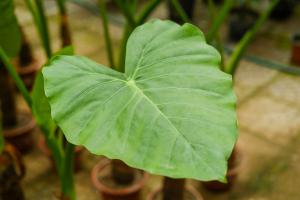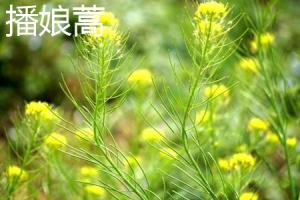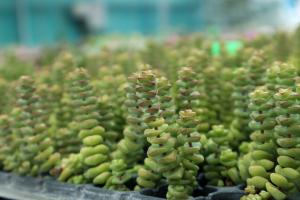Why Are My Young Tomato Plants Leaves Turning Yellow?
As a tomato plant owner, it can be concerning to see your young tomato plants start to develop yellow leaves. Yellow leaves can be an indication of a variety of issues, including nutrient deficiencies, diseases, or environmental factors. In this article, we will explore the possible causes of yellow leaves in young tomato plants and how to remedy each issue.
1. Nutrient Deficiencies
Tomato plants require a balance of nutrients to grow healthy and strong. Yellow leaves may occur when the plant is lacking certain essential nutrients, such as nitrogen, magnesium, or iron. Nitrogen deficiency is a common cause of yellow leaves in tomato plants, and it can be identified by yellowing of older leaves, starting from the bottom of the plant and moving upwards. Magnesium and iron deficiencies can also cause yellowing of the leaves, but usually, these deficiencies will appear as yellowing between the veins of the leaves.
To remedy nutrient deficiencies, it's important to identify which nutrient your plant is lacking. Begin by feeding your plants with a balanced fertilizer, water-soluble or granular, according to the instructions on the package. Organic amendments like compost, manure, or bone meal are also great sources of nutrients. If magnesium is the suspected nutrient deficiency, Epsom salt can be a quick solution, simply mix it into the soil or dilute it as a foliar spray. However, it's important to avoid over-fertilizing your plants, as this can lead to other issues.
2. Diseases
Yellow leaves can also be an indication of diseases like early blight, fusarium wilt, or verticillium wilt. These diseases can cause yellowing and wilting of the leaves, usually starting from the bottom of the plant and moving upwards. Early blight is a fungal disease that starts with brown spots on leaves and stems and eventually causes yellowing and wilting. Fusarium wilt and verticillium wilt are caused by soil-borne fungi, and they can cause yellowing of the leaves and stunted plant growth.
If you suspect your tomato plants have a disease, promptly remove infected plant material and dispose of it outside of your garden to minimize the spread of the disease. Apply fungicides or bactericides according to the directions on the package, or consult with your local garden center for disease-specific recommendations. Additionally, planting disease-resistant tomato cultivars can reduce the risk of plant diseases.
3. Environmental Factors
Lastly, environmental factors may play a role in causing yellow leaves. Overwatering or underwatering can cause the roots to become either waterlogged or too dry, leading to yellow leaves. Additionally, high temperature or cold temperatures can also cause leaf yellowing in tomato plants. For instance, too much sun exposure during hot days can lead to sunscald, causing the leaves to turn yellow or brown.
To remedy environmental issues, adjust your watering frequency and patterns according to the plant's needs. It's essential to water deeply and regularly, but avoid waterlogging the soil. Provide shade cloth or other shading materials to protect your plants from excessive heat or cold. And, consider planting your tomatoes where they can receive at least six hours of sunlight per day but avoid planting them in areas where they will receive direct sunlight during the hottest part of the day.
Conclusion
Yellow leaves in young tomato plants can be caused by nutrient deficiencies, diseases or environmental factors. By identifying the root cause of the yellowing in your plant, you can take the necessary steps to restore your tomato plants to health. With proper care and attention, your tomato plants will thrive and produce a bountiful harvest.

 how many times do yo...
how many times do yo... how many planted tre...
how many planted tre... how many pine trees ...
how many pine trees ... how many pecan trees...
how many pecan trees... how many plants comp...
how many plants comp... how many plants can ...
how many plants can ... how many plants and ...
how many plants and ... how many pepper plan...
how many pepper plan...





























